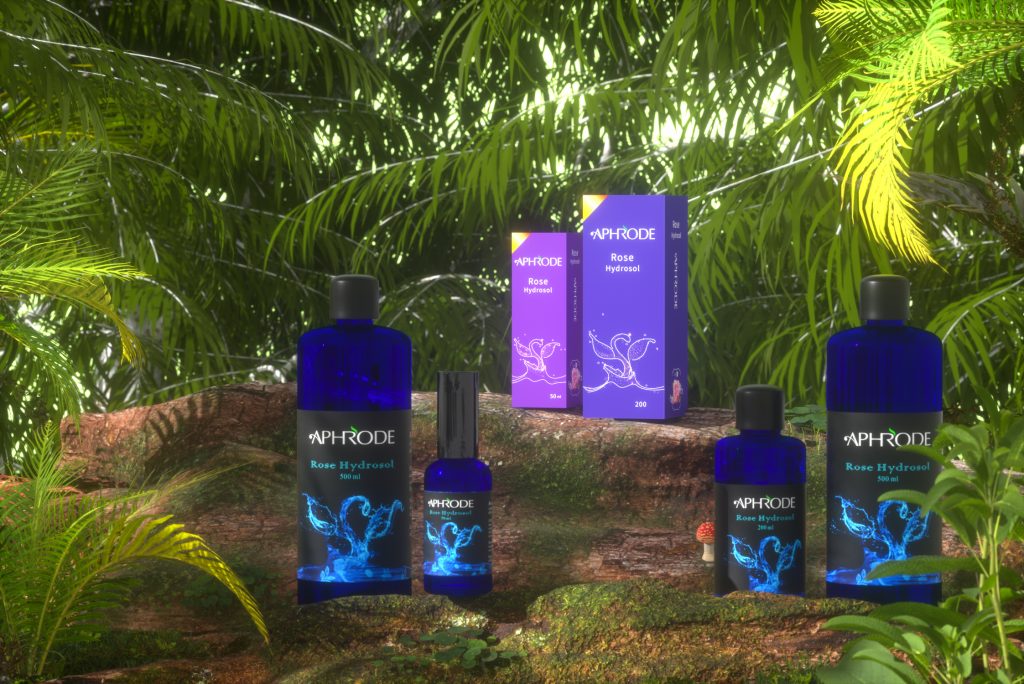IN the realm of aromatherapy, hydrosols, also known as hydrolates, hydrolats, floral waters, or plant waters, hold a special place. These precious liquids are a result of the steam- or hydro-distillation of plant material for aromatherapeutic purposes. The key to their effectiveness lies in the use of pure, uncontaminated water during distillation, preserving the therapeutic essence of the plant material for therapeutic use without further processing.
What Lies Within the Unique Water?
Hydrosols are a true embodiment of the entire plant in every drop, akin to a hologram. They encapsulate water-soluble components, essential oil molecules, and the very fluid that once coursed through the plant’s cells. This unique matrix of water, much more than mere water, is recognized as one of the most potent healing substances.
The Chemistry Aspect
Chemically, hydrosols contain essential oil components (hydrophilic) such as aldehydes, ketones, coumarin, lactone, sesquiterpene alcohol, diterpene alcohol, acetic acid, aromatic aldehyde, monoterpene alcohol, phenols, and oxides. They also include water-soluble plant substances like minerals, tannins, flavonoids, ionic compounds, carbohydrates, proteins, trace fatty acids, and plant fibers. These are components not typically found in essential oils, yet they are readily absorbed by the skin at low concentrations, making the floral waters exceptionally gentle and effective.
Purification and Shelf Life
Freshly manufactured hydrosols typically require around three months of purification and maturation. During this time, the constituents harmonize, resulting in a clearer appearance and refined aroma. Shelf life can vary, ranging from 18 months to over two years, with some hydrosols being more delicate and having a shorter shelf life, such as bay laurel.
The Benefits
Each hydrosol boasts unique benefits, much like its corresponding essential oil but with distinct applications. They are gentle yet effective and can often be applied topically without dilution for various skin concerns. The pH of hydrosols, which is slightly acidic, greatly influences their healing effects.
How to Incorporate Hydrosols into Your Skincare Routine
– Toner: Apply the pure floral water to clean skin using cotton pads or as a light spritz across your face.
– Masks: Combine hydrosols with clays or other ingredients for customized skincare recipes.
– Compress: Soak cotton balls or pads with the floral water and apply to reduce puffiness, redness, and swelling.
– Moisture Mist: Hydrosol mist provides relief from the elements, including dryness, humidity, stress, and more.
Other Applications of Hydrosols
Beyond skincare, hydrosols can serve various purposes:
– Oral use for specific treatments or therapeutic beverages.
– Gargling or mouthwash.
– Eyewash or eye drops (specific hydrosols).
– Eardrops.
– Nose drops.
– Douche.
– Safe for babies and children.
Hydrosols vs. Herbal Teas
Hydrosols stand out in terms of concentration and freshness compared to herbal teas, and they typically have a plant-to-water ratio of at least 1:1, frequently even 3 or 4:1, making them highly concentrated. Even diluted (30ml in 1L of water), they still remain potent, often surpassing the strength of herbal teas. Additionally, hydrosols often use fresh or slightly wilted plant material, preserving fragile components lost during the drying process in teas.

Traditional Producing Method

